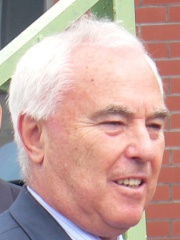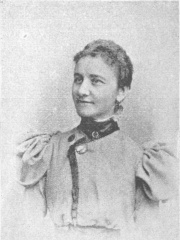
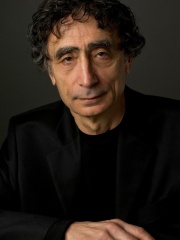
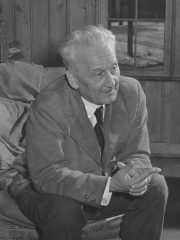
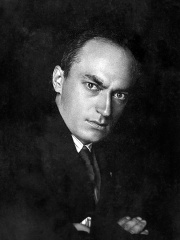
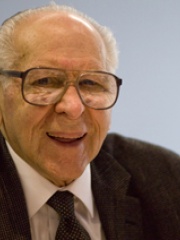


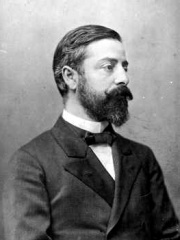
The Most Famous
PHYSICIANS from Hungary
This page contains a list of the greatest Hungarian Physicians. The pantheon dataset contains 726 Physicians, 12 of which were born in Hungary. This makes Hungary the birth place of the 15th most number of Physicians behind India, and Austria.
Top 10
The following people are considered by Pantheon to be the top 10 most legendary Hungarian Physicians of all time. This list of famous Hungarian Physicians is sorted by HPI (Historical Popularity Index), a metric that aggregates information on a biography's online popularity. Visit the rankings page to view the entire list of Hungarian Physicians.

1. Ignaz Semmelweis (1818 - 1865)
With an HPI of 79.73, Ignaz Semmelweis is the most famous Hungarian Physician. His biography has been translated into 71 different languages on wikipedia.
Ignaz Philipp Semmelweis (German: [ˈɪɡnaːts ˈzɛml̩vaɪs]; Hungarian: Semmelweis Ignác Fülöp [ˈsɛmmɛlvɛjs ˈiɡnaːts ˈfyløp]; 1 July 1818 – 13 August 1865) was a Hungarian physician and scientist of German descent who was an early pioneer of antiseptic procedures and was described as the "saviour of mothers". Postpartum infection, also known as puerperal fever or childbed fever, consists of any bacterial infection of the reproductive tract following birth and in the 19th century was common and often fatal. Semmelweis demonstrated that the incidence of infection could be drastically reduced by requiring healthcare workers in obstetrical clinics to disinfect their hands. In 1847, he proposed hand washing with chlorinated lime solutions at Vienna General Hospital's First Obstetrical Clinic, where doctors' wards had thrice the mortality of midwives' wards. The maternal mortality rate dropped from 18% to less than 2%, and he published a book of his findings, Etiology, Concept and Prophylaxis of Childbed Fever, in 1861. Despite his research, Semmelweis's observations conflicted with the established scientific and medical opinions of the time and his ideas were rejected by the medical community. He could offer no theoretical explanation for his findings of reduced mortality due to hand-washing, and some doctors were offended at the suggestion that they should wash their hands and mocked him for it. In 1865, the increasingly outspoken Semmelweis allegedly suffered a nervous breakdown and was committed to an asylum by his colleagues. In the asylum, he was beaten by the guards. He died 14 days later from a gangrenous wound on his right hand that may have been caused by the beating. His findings earned widespread acceptance only years after his death, when Louis Pasteur confirmed the germ theory of disease, giving Semmelweis' observations a theoretical and scientific explanation, and Joseph Lister, acting on Pasteur's research, practised and operated using hygienic methods with great success.

2. Gabor Maté (b. 1944)
With an HPI of 73.99, Gabor Maté is the 2nd most famous Hungarian Physician. His biography has been translated into 19 different languages.
Gabor Maté ( GAH-bor MAH-tay; born January 1944) is a Canadian physician and author. He has worked in family practices and specializes in childhood development and trauma, including long-term effects on physical and mental health, such as autoimmune diseases, cancer, Attention Deficit Hyperactivity Disorder (ADHD), and addiction. Maté's approach to addiction emphasizes the role of trauma in the development of substance use disorders, aiming to address underlying emotional pain as part of recovery. He has written five books exploring topics such as ADHD, stress, developmental psychology, and addiction. His work has generated both interest and debate within academic and clinical communities, with some commentators raising concerns about the scope and evidentiary basis of his claims. Some scholars argue that his views overstate trauma’s role compared to other evidence-based approaches. Psychologist Stanton Peele has argued that Maté offers “a reductionist vision of addiction” by tracing most cases back to childhood trauma. James C. Coyne, professor at the University of Pennsylvania, contends that Maté's emphasis on trauma risks sidelining established evidence-based treatments for addiction and stress-related illness. Vincenzo Di Nicola of the University of Montreal similarly noted that while Maté's ideas are accessible, they are not always grounded in empirical research. Nick Haslam, professor of psychology at the University of Melbourne, described Maté's focus on trauma as "unbalanced", suggesting it overlooks genetic, social, and neurobiological factors in disease and addiction. Together, these perspectives illustrate the ongoing debate over Maté’s emphasis on trauma, situating his work within a broader discussion about the balance between psychological, biological, and social factors in health and addiction.

3. Albert Szent-Györgyi (1893 - 1986)
With an HPI of 72.88, Albert Szent-Györgyi is the 3rd most famous Hungarian Physician. His biography has been translated into 70 different languages.
Albert Imre Szent-Györgyi de Nagyrápolt (Hungarian: nagyrápolti Szent-Györgyi Albert Imre; September 16, 1893 – October 22, 1986) was a Hungarian biochemist who won the Nobel Prize in Physiology or Medicine in 1937. He is credited with first isolating vitamin C and discovering many of the components and reactions of the citric acid cycle and the molecular basis of muscle contraction.

4. Kálmán Kalocsay (1891 - 1976)
With an HPI of 63.43, Kálmán Kalocsay is the 4th most famous Hungarian Physician. His biography has been translated into 25 different languages.
Kálmán Kalocsay (Hungarian pronunciation: [ˈkaːlmaːn ˈkɒlot͡ʃɒi]; 6 October 1891 in Abaújszántó – 27 February 1976) was a Hungarian Esperantist poet, translator, and editor who significantly influenced Esperanto culture, both in its literature and in the language itself, through his original poetry and his translations of literary works from his native Hungarian and other languages of Europe. His name is sometimes Esperantized as Kolomano Kaloĉajo, and some of his work was published under various pseudonyms, including C.E.R. Bumy, Kopar, Alex Kay, K. Stelov, Malice Pik and Peter Peneter. Kalocsay studied medicine and later became a surgeon and the chief infectious disease specialist at a major Budapest hospital. He learned both Esperanto and its breakaway dialect Ido in his adolescence, but became more inclined towards Esperanto after he had seen its greater literary potential. In 1921 his first original collection of poems, Mondo kaj Koro (“World and heart”) was published. A further decade passed before the appearance of his collection Streĉita Kordo (“A taut string”), which many Esperantists consider one of the finest collections of original Esperanto poetry, and Rimportretoj (“Portraits in rhyme”), witty poems in rondel style about various people then prominent in the Esperanto movement. In 1932, under the pseudonym Peter Peneter, he published Sekretaj Sonetoj (“Secret sonnets”), a book of erotic verse. In addition to being a prolific author of Esperanto works, Kalocsay guided the Esperanto literary world through a magazine and publishing house called Literatura Mondo (“Literary world”). A group of writers who coalesced around this magazine during the 1920s and 1930s were known as the "Budapest school" (Budapeŝta skolo). Works of Kalocsay about literary and linguistic theory include the expansive Plena Gramatiko de Esperanto (“Complete grammar of Esperanto”) and Parnasa Gvidlibro (“Handbook of Parnassus”), a work on Esperanto poetics co-authored with Gaston Waringhien, and an academic style guide for Esperanto, Lingvo – Stilo – Formo (“Language, style and form”). Kalocsay also co-compiled the two-volume Enciklopedio de Esperanto (“Encyclopædia of Esperanto”). Much was written about Kalocsay by his literary executor Ada Csiszár, after whose death the estate passed to the Esperanto Museum of the Austrian National Library.
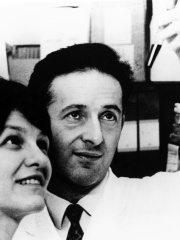
5. Eva Klein (1925 - 2025)
With an HPI of 63.39, Eva Klein is the 5th most famous Hungarian Physician. Her biography has been translated into 22 different languages.
Eva Klein (née Eva Fischer; 22 January 1925 – 19 January 2025) was a Hungarian-Swedish scientist. Klein worked at the Karolinska Institute since leaving Hungary in 1947. She is regarded as a founder of cancer immunology. Her life and career choices as a young Jewish woman were constrained by discrimination, and she survived the late stages of German occupation in hiding. A medical doctor with a PhD in biology, she worked in cancer immunology and virology. In the 1960s, she led the discovery of natural killer cells and developing Burkitt's lymphoma cell lines. She pursued her own lines of work as well as working closely with her husband, George Klein. In 1975, the U.S. Cancer Research Institute established the William B. Coley Award for Distinguished Research in Basic and Tumor Immunology. The inaugural award was shared by 16 scientists considered to be "founders of cancer immunology", including Eva and George Klein. Their award noted their "discoveries of tumor-specific antigens in the mouse, to the most comprehensive immunological analysis of a human cancer, Burkitt's lymphoma".

6. Thomas Szasz (1920 - 2012)
With an HPI of 62.14, Thomas Szasz is the 6th most famous Hungarian Physician. His biography has been translated into 28 different languages.
Thomas Stephen Szasz ( SAHSS; Hungarian: Szász Tamás István [saːs]; 15 April 1920 – 8 September 2012) was a Hungarian-American academic and psychiatrist. He served for most of his career as professor of psychiatry at the State University of New York Upstate Medical University. A distinguished lifetime fellow of the American Psychiatric Association and a life member of the American Psychoanalytic Association, he was best known as a social critic of the moral and scientific foundations of psychiatry, as what he saw as the social control aims of medicine in modern society, as well as scientism. Szasz maintained throughout his career that he was not anti-psychiatry but rather that he opposed coercive psychiatry. He was a staunch opponent of civil commitment and involuntary psychiatric treatment, but he believed in and practiced psychiatry and psychotherapy that involved consenting adults.

7. Moritz Kaposi (1837 - 1902)
With an HPI of 61.10, Moritz Kaposi is the 7th most famous Hungarian Physician. His biography has been translated into 18 different languages.
Moritz Kaposi (Hungarian: Kaposi Mór, pronounced [ˈkɒpoʃi ˈmoːr]; 23 October 1837 – 6 March 1902) was a physician and dermatologist from the Austro-Hungarian Empire who discovered the skin tumor that received his name (Kaposi's sarcoma).

8. Edith Farkas (1921 - 1993)
With an HPI of 58.61, Edith Farkas is the 8th most famous Hungarian Physician. Her biography has been translated into 19 different languages.
Edith Elizabeth Farkas (13 October 1921 – 3 February 1993) was a New Zealand Antarctic researcher, best known for being the first Hungarian woman and also the first New Zealand MetService female staff member to set foot in Antarctica. In addition she conducted world-leading ozone monitoring research for over 30 years.

9. Emil Zuckerkandl (1849 - 1910)
With an HPI of 58.10, Emil Zuckerkandl is the 9th most famous Hungarian Physician. His biography has been translated into 17 different languages.
Emil Zuckerkandl (1 September 1849 Győr, Hungary – 28 May 1910, Vienna, Austria-Hungary) was an Austrian-Hungarian anatomist who held the first chair for anatomy at the University of Vienna as of 1888.
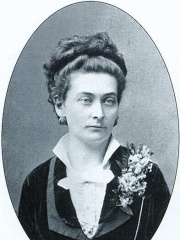
10. Vilma Hugonnai (1847 - 1922)
With an HPI of 55.72, Vilma Hugonnai is the 10th most famous Hungarian Physician. Her biography has been translated into 26 different languages.
Countess Vilma Hugonnai de Szentgyörgy (30 September 1847 in Nagytétény, Hungary (today part of Budapest) – 25 March 1922 in Budapest) was the first Hungarian woman medical doctor.
People
Pantheon has 12 people classified as Hungarian physicians born between 1818 and 1944. Of these 12, 2 (16.67%) of them are still alive today. The most famous living Hungarian physicians include Gabor Maté, and Jenő Kamuti. The most famous deceased Hungarian physicians include Ignaz Semmelweis, Albert Szent-Györgyi, and Kálmán Kalocsay.
Living Hungarian Physicians
Go to all RankingsDeceased Hungarian Physicians
Go to all RankingsIgnaz Semmelweis
1818 - 1865
HPI: 79.73
Albert Szent-Györgyi
1893 - 1986
HPI: 72.88
Kálmán Kalocsay
1891 - 1976
HPI: 63.43
Eva Klein
1925 - 2025
HPI: 63.39
Thomas Szasz
1920 - 2012
HPI: 62.14
Moritz Kaposi
1837 - 1902
HPI: 61.10
Edith Farkas
1921 - 1993
HPI: 58.61
Emil Zuckerkandl
1849 - 1910
HPI: 58.10
Vilma Hugonnai
1847 - 1922
HPI: 55.72
Gabriele Possanner
1860 - 1940
HPI: 53.59
Overlapping Lives
Which Physicians were alive at the same time? This visualization shows the lifespans of the 9 most globally memorable Physicians since 1700.

